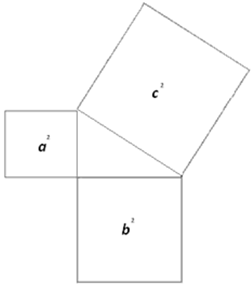Elaboration on this Achievement Objective
This means that students will apply trigonometric ratios to find the angles and lengths of sides in right-angled triangles. Students need to recognise two features of trigonometric ratios:
- Given similar right angled triangles the ratios of side lengths are the same, for example
.png)
For both triangles the ratio of the sides opposite and adjacent to angle A is 6/8 = 0.75. For any similar triangle this is also true. This ratio is the tangent of angle A, so A = 37°.
- The trigonometric ratios can be found using a right-angled triangle with a hypotenuse of one and applied to any other similar right angled triangle by scaling.
The trigonometric ratios are:
- sin θ = side opposite θ/hypotenuse,
- cos θ = side adjacent to θ/hypotenuse,
- tan θ = side opposite θ/side adjacent to θ
These ratios are often remembered using the mnemonic SOH CAH TOA.
Students will use Pythagoras’ theorem (a2 + b2 = c2) to find the lengths of sides of right angle triangles.

.png)

